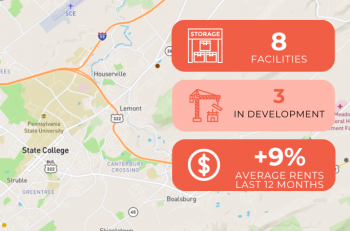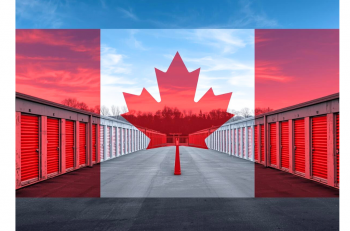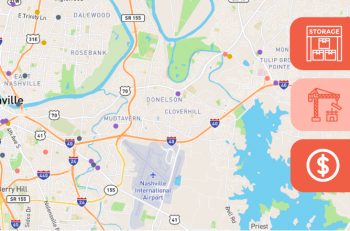First published 2014
Five of your sixty 5 x 10 climate-controlled units are vacant. Yesterday, the self-storage facility down the street decreased its monthly rate on its 5 x 10 climate controlled units by $7 so that your units are now $5 per month more expensive. Do you adjust your monthly rate or leave it where it is?
Although the concept of competitive intelligence and consideration of competitors’ pricing practices when setting rates is not new, the ability of small and mid-size self storage companies to use such information is about to improve dramatically. This change should result in more systematic approaches to pricing and significantly greater profits for many.
Most business executives agree that understanding the competition is one of several important factors in determining how to price and position their products and services. Indeed, taking a more systematic approach to obtaining and using competitor prices has become a best practice in many industries because of the extraordinarily large impact that improved pricing has on the bottom line. Understanding and anticipating price trends can often make the difference between average financial performance and being a top performer.
Over the past decade, automated collection of web-based competitor pricing data has spurred the ability of progressive companies to improve their pricing analytics and revenue management capabilities. One example that has gained recent notoriety is Amazon’s relentless tracking and undercutting of competitor prices in several verticals. The value of easy access to competitor prices is so great that a number of technology companies have sprung up that use web-based robotics to collect prices that are offered via the internet so that such pricing information can be incorporated into a company’s pricing strategies in a systematic manner.
Self-Storage operators have long understood the potential value of understanding the prices and promotions offered by their competitors. “Call-arounds” by Store Managers have been a common industry practice to gain insight into competitor prices. The problems and drawbacks of relying on calls to competitor stores or manually reviewing competitor websites to obtain reliable and comprehensive pricing information are also widely recognized. The result is that in addition to being time-consuming to carry out, these activities often result in incomplete or worse, inaccurate information.
While it has been worthwhile for the largest self-storage companies to make significant financial investments in automated tools to obtain competitor prices, such investments have been well beyond reach of the overwhelming majority of self-storage firms. StorTrack may be the first pricing tool in the self-storage industry that changes this landscape. Small and mid-size self-storage firms now have the opportunity to obtain access to pricing analytics as well as to competitor prices, promotions, and pricing trends. This development could very likely enable smaller and mid-size companies to adopt more systematic approaches to pricing. And if that happens, these firms will discover that their profit margins increase dramatically.
Many self-storage operators started with minimal technology infrastructure. And relative to many other industries, it is still possible to operate a facility profitably with limited investments in technology. Consequently, these companies have tended to adopt a cautious approach towards such investments. During the past decade, however, this has begun to change, primarily for the larger firms; we expect this trend to accelerate during the next few years and to expand to the smaller operators as well. One of the key reasons we anticipate such a change is that relative to many industries, the impacts of improved pricing decisions tend to be greater. Each transaction represents a greater percentage of overall revenue and drives revenue for a longer period of time because customers often stay in units for months or even years. Further, self-storage companies have great flexibility over when, and by how much, they change the monthly rates of existing customers.
As noted previously, the value of monitoring and using pricing data to respond appropriately to competitor pricing decisions is well recognized across the self-storage industry. Unfortunately, when manual tracking efforts and/or “information trades” with the closest competitor stores must be relied upon to obtain this information, a store’s ability to use this information is often inconsistent and of uneven quality. Furthermore, there are few feedback mechanisms to help owner-operators track how well they or their Store Managers are making the most profitable pricing decisions. Occupancy rates tend to be relied upon, often leading to under-pricing and much revenue being “left on the table.”
By providing transparency into what competitors are charging for their units, as well as the types of move-in promotions that are offered for each unit type, pricing tools such as StorTrack will be especially useful for independent owners and smaller firms. The ability to easily access and analyze current and historical information will dramatically enhance internal communications focused on pricing and profits. Information and data not previously available will become routinely discussed and acted upon. With relatively minimal effort, automated pricing alerts will be implemented leading to a greater awareness of when units may be inappropriately priced.
When historical pricing data is not maintained consistently, it is extremely difficult to recognize and track changes in prices over time. Distinguishing anecdotal knowledge from fact-based, data-driven trends and anomalies is virtually impossible. Broad-based pricing decisions can dominate, rather than highly targeted pricing actions. Revenues and profits are less than they would otherwise be.
As leading small to mid-size self-storage firms systematize their price tracking capabilities, we expect that stories of their improved financial performance will be communicated and recognized through the industry. This will lead to further adoption of 3 pricing tools such as StorTrack. And if the experiences of other industries hold true, and we have no reason to believe otherwise, a more data-driven and systematic approach to pricing will enable the entire self-storage industry to operate more profitably.
The use of pricing tools will benefit self-storage firms in a variety of ways, including:
- Higher confidence within the organization when making pricing decisions
- Faster and clearer identification of units that are not correctly priced and how such situations can be corrected
- Reduced manual efforts to collect data, freeing up staff to spend more time on deciding how to best modify prices or on other activities
- Improved understanding of “who is the competition” within “your competitive zone”
- Understanding when it is most profitable to be a price leader or a price follower.
Across many industries, as companies incorporate systematic, dynamic, and data-driven methods into their pricing approach, they typically realize sustainable increases in profits that are greater than anticipated. A cautionary note: Pricing data and analytics are not substitutes for the expertise and experience of staff. Rather, they provide the greatest value when used by staff to prioritize and focus their attention on those decisions where the opportunities for increased revenue/profits are most significant. We expect this to be the case for the self-storage industry as well.
Pricing analytics are frequently grouped into three categories:
Descriptive analytics frequently involve reports that illuminate historical trends and highlight current situations. Such reports are intended to help identify future opportunities.
Predictive analytics focus on estimating/forecasting future events; alerts can be specified that notify staff when actual events are unfolding differently than anticipated, identifying potential opportunities for pricing actions to provide value.
Prescriptive analytics build on predictive analytics, providing specific recommendations for pricing analysts to consider. As self-storage firms begin to use pricing tools, we anticipate that pricing analytics in each of these three categories will be refined and enhanced over time, enabling self-storage firms to incrementally improve their pricing capabilities as they progress on their journey from limited (or no) pricing analytics to obtain more advanced pricing analytics.
About the Authors and Veritec Solutions
Dr. Warren Lieberman is President of Veritec Solutions and Jim Mullin is Vice President of Planning Analytics for Veritec Solutions. Veritec is known for “Practical Analytics for Profitable Decisions.” With experience spanning 30 industries, Veritec works with companies to design, develop, and implement enhanced pricing analytics. Veritec began helping self-storage firms enhance their pricing capabilities in 1999. For more information, visit Veritec at www.veritecsolutions.com





